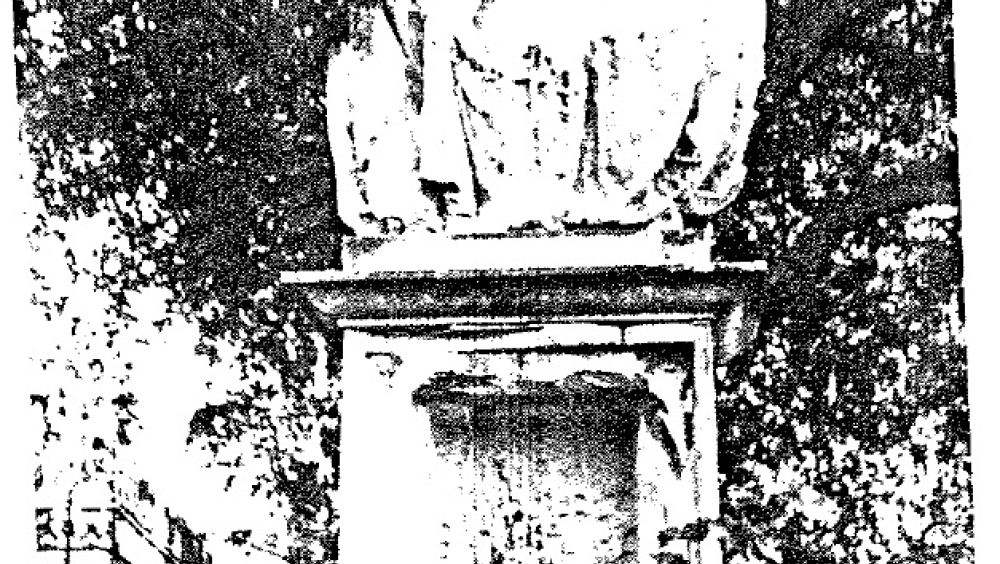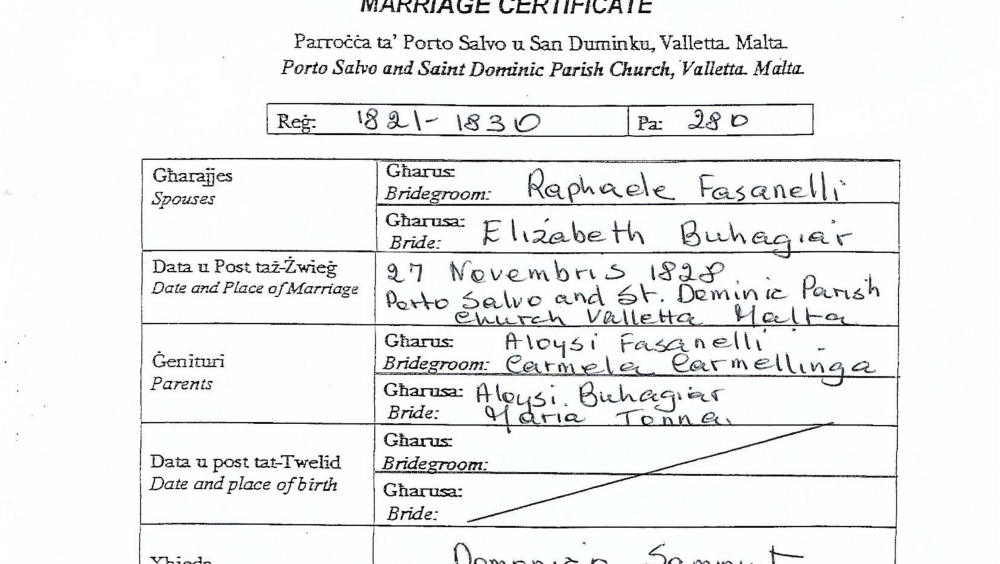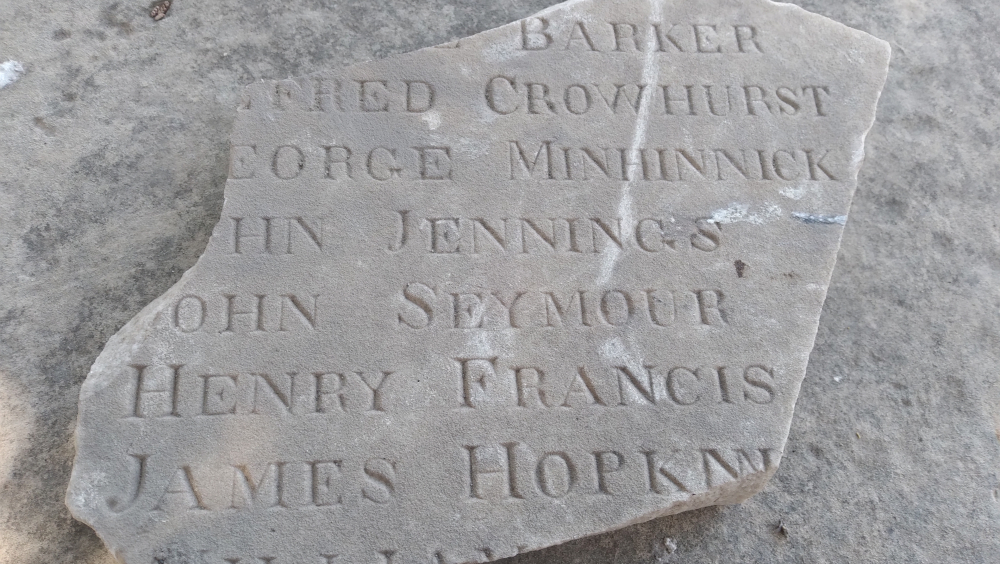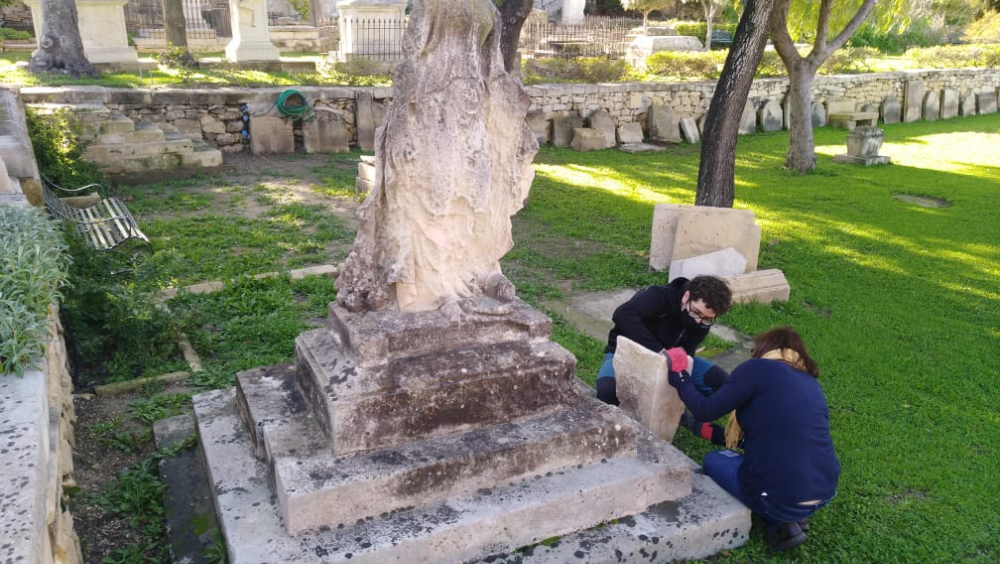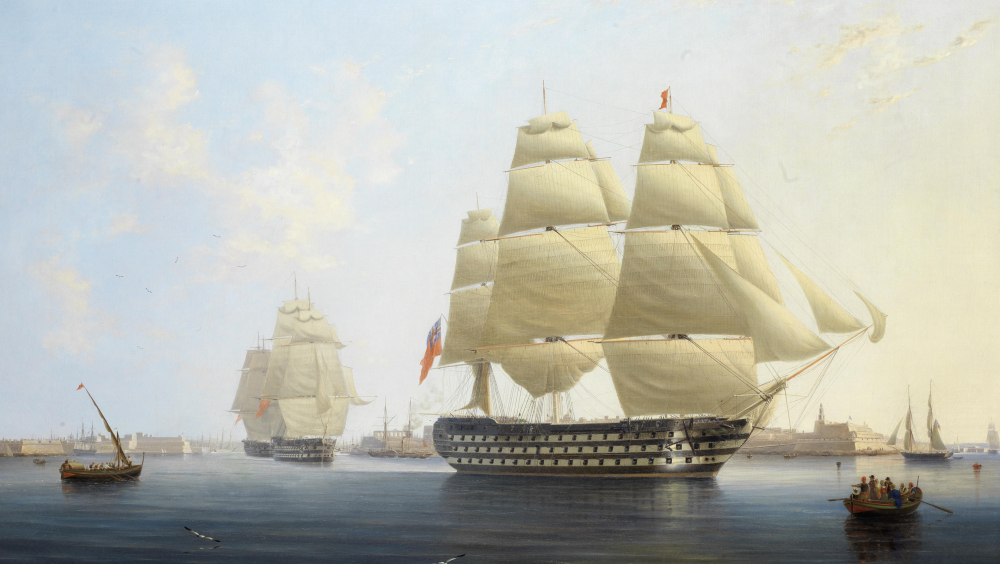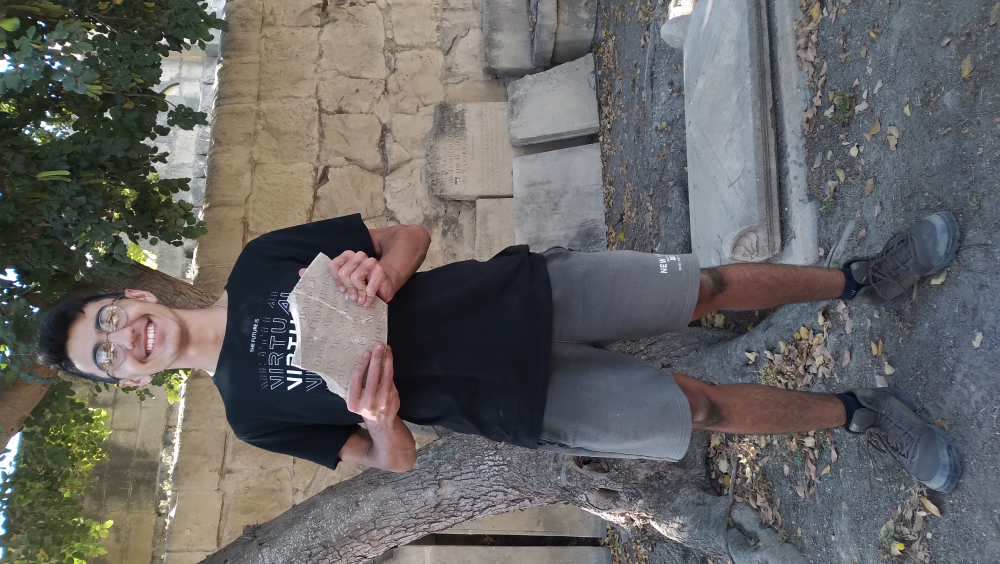IN MALTA: THE RESTORATION OF BELLONA, GODDESS OF WAR, AND THE MEN OF HMS QUEEN.
A story of a statue, cholera, the men of HMS Queen in the 1850s and how today with the help of volunteers and students from across Europe, Msida Bastion Garden is gradually restoring and bringing to light the history and names associated with one of the funerary monuments on this site. The Garden is an old, mainly Protestant, cemetery which was set up by the British in Malta in 1806 and finally closed in 1857 when it became full. Such were the times that many died of diseases that today can be cured by modern medicine. One such disease was cholera and it swept through Malta in the 1850s, killing many in the local population as well as on the ships which crowded Malta’s Grand Harbour. HMS Queen was one of those ships and in the Garden we are left with a statue of Bellona, Goddess of War, in remembrance of the men of HMS Queen.
It all began with the arrival in Malta in 1850 of the dreaded disease, cholera, probably carried by a ship’s passengers escaping from the disease-hit Barbary Coast. Soon it had spread to the local populace and the many ships berthed in Malta’s harbours, where men lived in close proximity with one another. HMS Queen, at that time a 110-gun sailing battleship of the Royal Navy under the command of Captain Henry Bruce and the flagship of the Mediterranean Squadron, was no exception and of 1,000 men on board 47 died of cholera. Ships in the 19th Century were dangerous places where you could die very easily: drowning, falling from riggings and various diseases and although there were ships’ doctors, very often there was little that could be done for the men, and they were buried where they had died. Many were Protestants and, as one of the few Protestant cemeteries in Malta, Msida Bastion Cemetery housed the remains of British families and military personnel who died on the island between 1806 and 1857.
On the bastions and overlooking Marsamaxett Creek, the Msida Bastion Garden is one of the local heritage sites entrusted to the NGO, Din L-Art Ħelwa, (Malta’s National Trust) to maintain and, as such, many of its funerary tombs and statues are gradually being researched and restored. It is very much a work-in-progress as new discoveries are made, both within the Garden itself, online and in research libraries in Malta and abroad. One of the most interesting of the statues is that of Bellona, Goddess of War, shown as a woman warrior with helmet, shield and, at her feet, weapons of war such as guns and cannon balls. This statue was erected and paid for by the Officers and Men of HMS Queen to commemorate the deaths of 61 of their fellow naval comrades between 1849 and 1851. Every mess on board contributing 10 shillings sterling to have the statue sculpted and engraved.
Even after the Garden’s initial restoration in 1990, following World War II bombing, and looting and vandalism in the intervening years, there was little information on the heavily eroded statue and the men she commemorated. However, over the years as graves, marbles and stones have been discovered (just recently a member of the public returned a piece of engraved marble he bought at auction 40 years ago!) and cleaned, tablets have been fitted together showing some of the names of the men that Bellona represents. These, along with research at St Paul’s Cathedral in Valletta, archival copies of local papers of the period, and at the National Archives Kew, where we found the diary of the Surgeon on HMS Queen written during the cholera outbreak which killed more than 3,700 people on the Maltese Islands between June and September 1850, have helped to build up the story of who these men were from HMS Queen to their final resting place in Malta. Men such as Edward Hammond, Gunner, aged 44, who fell from the main top sail sheet to his death, Raffaele Fasanelli, Bandsman, aged 43, who died from cholera, leaving behind his Maltese wife and children, and Edward Campbell, Boy 2nd Class, aged 15, who died from cholera.
It therefore seems fitting that the next step should be to restore the statue to her former glory, on her plinth, and with the men once more listed on the statue as they were when the officers and men of HMS Queen dedicated the names in a cemetery far from home.
The Msida Bastion Garden is a tranquil, old, cemetery looked after by volunteers from Malta, Italy, UK, Hungary, Sweden, France, Ireland, Australia, New Zealand and Germany and where locals and visitors can come, learn some of the history of Malta and enjoy a natural environment full of plants and trees and overlooking the blue waters of the Mediterranean. Tours of the cemetery are held nearly every week for interested participants and events are held there by various local arts and cultural societies. To expand our horizons even more, every year the Garden hosts students from Malta and abroad who come to work as part of their community-based courses from colleges, schools and universities. One of their many tasks is to help find, research and restore details on the graves which have become badly eroded over time. We see the Garden as very much part of a multi-cultural dimension within the many aspects of Malta’s cultural heritage.
